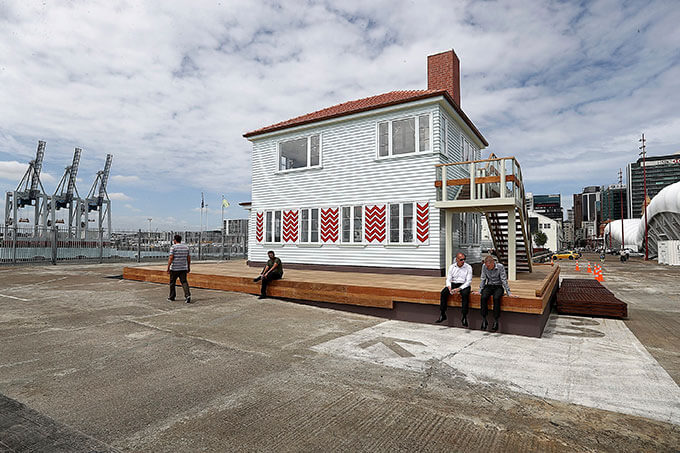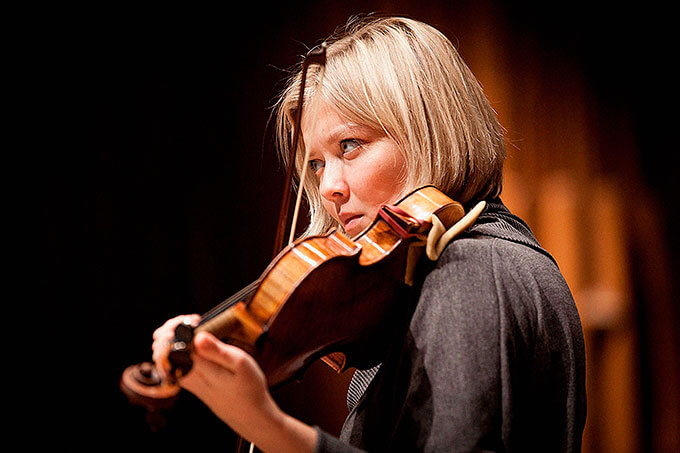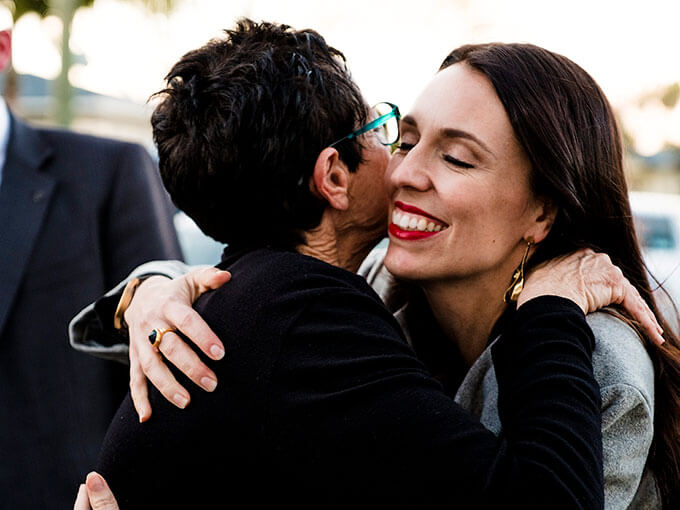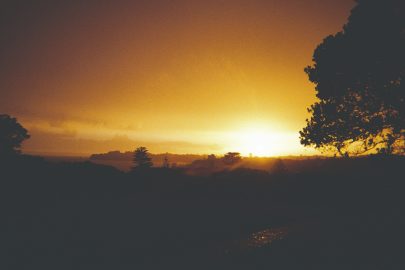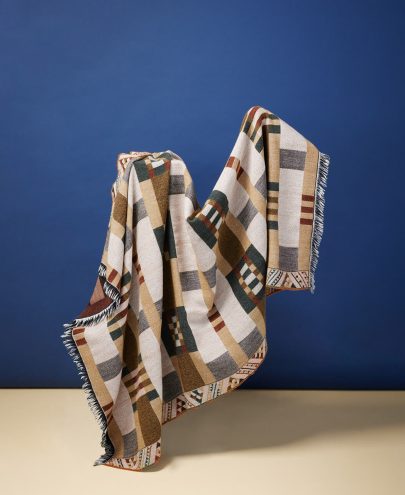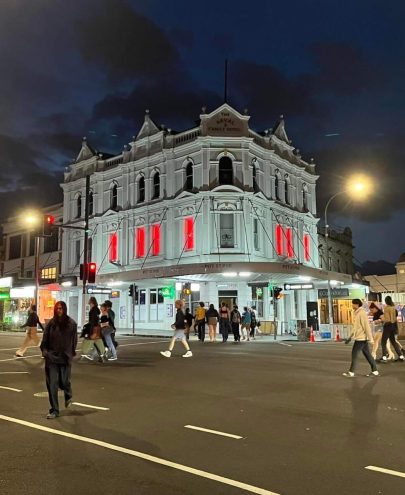Dec 28, 2017 etc
SHOPPING
Simon James Concept Store
Celebrated furniture and lighting designer Simon James opened a new concept store in Newmarket this year and its attention to detail makes for a rather glorious shopping experience. Fitted out by Rufus Knight and renovated by Nat Cheshire, the result is a light-filled, bright space showcasing luxury homewares, jewellery, clothing and fragrances.
Babelogue
It’s one thing trawling through antique shops trying to find that special candelabra, but it’s something else entirely when the best vintage homewares are curated for you. Babelogue owner Charlotte Rust pairs Persian rugs with giant clam shells and Ikebana vases to create a gorgeous bohemian and mid-century aesthetic.
Checks Downtown
The number of decent menswear stores in Auckland is limited, so it was a breath of fresh air when Gubb & Mackie’s ex-creative director Jordan Gibson launched Checks Downtown. He imports clothing such as T-shirts, caps and sweaters from eclectic overseas streetwear labels including Battenwear and POP Trading Company.
Mecca Maxima
We already had the Ponsonby store, but Mecca Maxima arrived carrying the promise of stocking cult brands never before sold in New Zealand. It met the hype with a shiny shop in Queen St offering the likes of Winky Lux and Too Faced plus mini-versions of their top-selling products. Who doesn’t love things in mini?
Zara
Although it’s located in the rabbit warren that is Sylvia Park, high street fashion label Zara’s arrival in New Zealand attracted huge fanfare, with lines spiralling out of the door on opening day. We just love the fact their clothes are both affordable and on-trend.
FASHION
Deadly Ponies x My Little Pony
Giddy-up! In the most unexpected collab of the year, cult handbag label Deadly Ponies paid tribute to the children’s toy brand with rainbow colour palettes and key-chain ponies. Fans of their usually understated soft leather bags snapped up multi-hued totes, two-toned pony-emblazoned pouches and printed purses.
Maggie Marilyn goes next-level
Auckland-based, Whitecliffe-trained Maggie Hewitt’s designs, launched under the label Maggie Marilyn, are totally in-vogue right now, with a recent British Vogue feature cementing her spot in the fashion firmament. Her collections — beloved for their signature flouncy sleeves, ruffled pants and luxe fabrics — are sold in stores around the globe and exclusively in Auckland at The Shelter.
Lonely’s celeb fanbase
From Kylie Jenner to Lena Dunham and Jemima Kirke, celebs have been loving Lonely Lingerie all year long. The local label also attracted attention for its Lonely Girls Project photo series on Instagram, which aims to challenge lingerie-marketing norms by showing women of various ages and different shapes and sizes in their underwear. If you didn’t ’gram it, did it really happen?
Harman Grubiša’s fashion win
In a first for a New Zealand womenswear label, designers Jessica Grubiša and Madeleine Harman of Harman Grubiša won their category in the International Woolmark Prize regional final. It means the pair — known for their sleek silhouettes with a focus on luxury fabrics — are in the world finals in Florence. Previous winners have included the likes of Karl Lagerfeld and Yves Saint Laurent.
Wynn Hamlyn at NZFW
Startling fire-engine reds, puffer jacket-inspired corsets and wide-brimmed straw hats: Wynn Hamlyn’s New Zealand Fashion Week show was one to remember. Since its 2014 launch, the designer’s womenswear label has become known for merino knitwear and classical, sleek tailoring.
BOOKS
Acceptance speech
It was in the fale at Auckland University during the launch of Selina Tusitala Marsh’s third collection of poetry, Tightrope, that the surprise announcement of New Zealand’s Poet Laureate was made. Her poems are funny and clever and strung together in tangles of syllables that work the jaw with gum-chewing sass. Fittingly, she acknowledged the mantle in verse: “I accept this award on behalf of those/for whom poetry induces vomit/I will woo you with haiku, spoken word, slam, rhyming couplet and sonnet”.
Author worship
A polemic against technocratic politics, a treatise on love, care and community, Max Harris’ The New Zealand Project spent 19 weeks on the best-seller chart. He did an author tour like the new messiah, speaking truth to power, creating an eddy of idealism. Why not?
Big binge
Man Booker Prize winner George Saunders came for the Auckland Writers Festival, along with Bad Feminist Roxane Gay, and Nigerian-American photographer Teju Cole, to name just three of the 206 authors at the biggest writers’ festival in the South Pacific. Walk On High, a mini festival taster on High St with readings, antics and “literary karaoke”, takes the prize for best free event.
Opening night
Thanks to an impassioned performance from Rod Oram and spirited address from the new Poet Laureate, Going West’s opening was abuzz. But it was Bill Manhire’s poems/riddles/lyrics subsumed into jazz by Norman Meehan and Hannah Griffin, from the trio’s CD and book combo Tell Me My Name, that left the audience dumbfounded — in a good way.
Brilliant books
Baby by Annaleese Jochems is probably this year’s best local debut novel. The narrator is a funny, narcissistic millennial. There is little scenery (most of the novel is spent in a boat at anchor), and no sex, though the promise of it is a clammy presence. Best non-fiction? Diana Wichtel’s Driving to
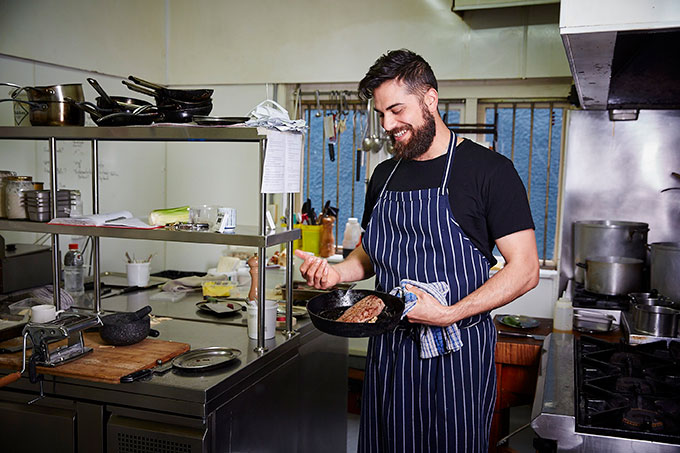
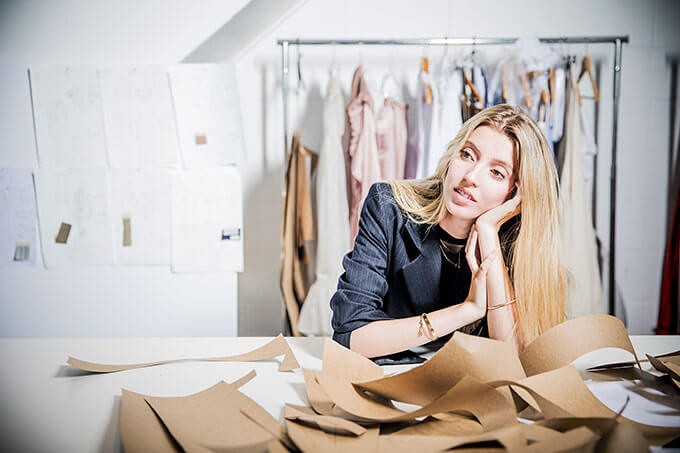
Sport
Black Caps scrape by in Eden Park thriller
It was the kind of high drama only cricket produces. Australia’s Marcus Stoinis had struck an astonishing 11 sixes in his 146, rescuing his team from 54 for five wickets in their pursuit of 286, and victory seemed nearly assured — just seven runs required, 19 balls to score them. Sure, Stoinis had only the number 11 for company, but in the four overs he’d been in the middle, Josh Hazlewood hadn’t yet faced a ball. Stoinis clipped the last ball of the 47th over to New Zealand captain Kane Williamson — Hazlewood, eager to keep his partner on strike for the next over, backed up an inch too far, and his desperate dive back to safety couldn’t beat Williamson’s direct hit. New Zealand won, and went on to wrest the coveted Chappell-Hadlee Trophy back, too.
Black Ferns celebrate another World Cup win
It was a long time coming but the champion Black Ferns — a rugby team even more successful than the All Blacks — finally got a public celebration of their latest World Cup win, with a meet-and-greet at South Auckland’s Manukau Event Centre. It wasn’t quite the celebration they deserved after securing the trophy: it came over a month after victory over England in the final and paled in comparison to, say, the parade that honoured Team New Zealand, which took over the CBD for an entire afternoon. A similar level of celebration for the Black Ferns, who secured the trophy for a record fifth time, would have been well in order.
North Harbour is Auckland’s best rugby team
While it has been slim pickings for Auckland’s supposedly glamour teams — the Blues and the Warriors — an outfit on the other side of the bridge has, so far this year, given the city’s followers of the oval-ball codes a rare reason for optimism. At the time of writing, North Harbour was in the Mitre 10 Cup semis, having finished 19 points clear of Auckland, an incredible achievement for a team that only last season won promotion from the second division, and which now looks every inch the flag-bearer of Auckland’s rugby hopes.
ABs crush South Africa
The Springboks arrived on the North Shore unbeaten this year. They left more than a little humiliated by an All Blacks performance as dominant as any in memory. The 57 points the All Blacks heaped upon the old enemy matched exactly the number they reached the last time the two teams met, only this time those points were unanswered. Never before have the Springboks lost by such a margin: that the All Blacks won the rematch a couple of weeks later by just one point confirms the singularity of that North Shore performance.
The America’s Cup victory means big things for Auckland
Not so much a great Auckland sporting moment as it was a sporting moment that meant a lot for Auckland, Team New Zealand’s 7-1 victory over Oracle Team USA in Bermuda means the city has to gear up for the 2021 defence. The year 2000 event gave the city the redevelopment of the Viaduct; hopefully it’s not too much to wish for that the 2021 edition accelerates Auckland’s embrace of its waterfront.
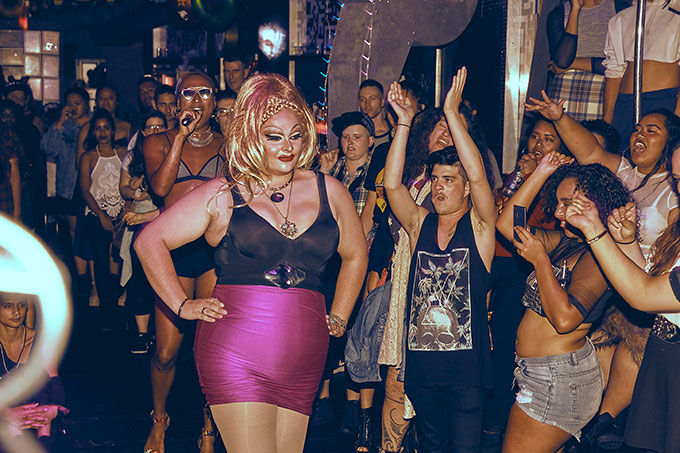
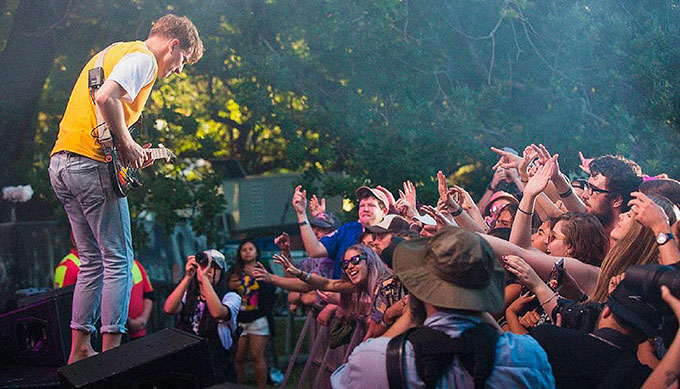
URBAN DESIGN
Best public space: Freyberg Place & Ellen Melville Centre, city, by John Reynolds, Isthmus Group and Stevens Lawson Architects
The cascade of higgledy-piggledy concrete steps in front of the Metropolis tower is civic art, a participatory public installation that playfully promotes private contemplation, and social interaction in the city’s unpredictable theatre of pedestrian movement. Coupled with the refurbished Pioneer Women’s Hall opposite, now an urban living room and community centre, the space pays tribute to pioneering women and other history while providing a stylish oasis in the heart of the CBD.
Best interior: ASB Waterfront Theatre, Halsey St, North Wharf, by Moller Architects
Outside, it looks a bit like ASB’s adjacent corporate headquarters. But any misgivings are cast aside when ascending to the curved auditorium with its playful multi-coloured seats. The state-of-the-art proscenium arch purpose-built for Auckland Theatre Company delivers great reverberation and a wonderful foot-stomping timber floor for encore calls, while also accommodating ballet, dance and movies. With no centre aisle and just 18m from back wall to front of stage, this is a magnificently flamboyant intimate theatre.
Best chapel: Bishop Selwyn Chapel, Holy Trinity Cathedral, Parnell, by Fearon Hay Architects
This radical departure from the norm in church design opens the walls on three sides with floor-to-ceiling glass, putting the people (or their absence) on show. The south wall can also slide to open the space and the altar to the surrounding garden and sky. The pavilion is capped by the curve of an upside-down dome adorned with a kilogram of 50,000 gilded gold leaves. Too much? Perhaps, but the way the material exquisitely reflects the light, layering the space in a deep golden hue, is transcendental.
Best church hall: Lesieli Tonga auditorium, Favona Rd, Mangere, by Bull O’Sullivan Architecture
The duck egg blue blanket of giant 1.8m frangipani flowers on the coved ceiling envelops those who enter the universe of the fale and the Pacific. Built by the Tuingapapai Free Wesleyan Church parishioners, it symbolises warmth and welcome. Above all it is a place, as its users attest, for the city’s 60,000 Tongans to be Tongan.
Best façade/heritage makeover: Australis House, Britomart, by Peddle Thorp
The drawing plastered on the bland backside of this building housing Tiffany’s is audacious, subversive and subtle — a glancing look might miss it. But the full-size tracing of the classical late-Victorian Customs St East faÇade, cut and pasted on the building’s less-decorated rear, is terrific. A nod to centuries-old sgraffito, this carefully applied overlay is both beautiful and unsettling. It also heralds a new less-uptight heritage conversation, one that respects the past but also gently takes the piss.
Contributors — James Belfield; Susanna Andrew; Chris Barton; James Wenley; India Hendrikse; Anthony Byrt; David Larsen; Kate Richards; James Borrowdale.
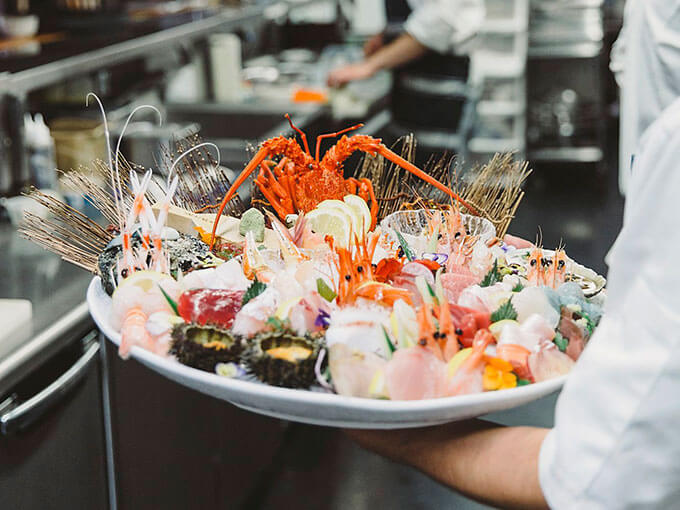
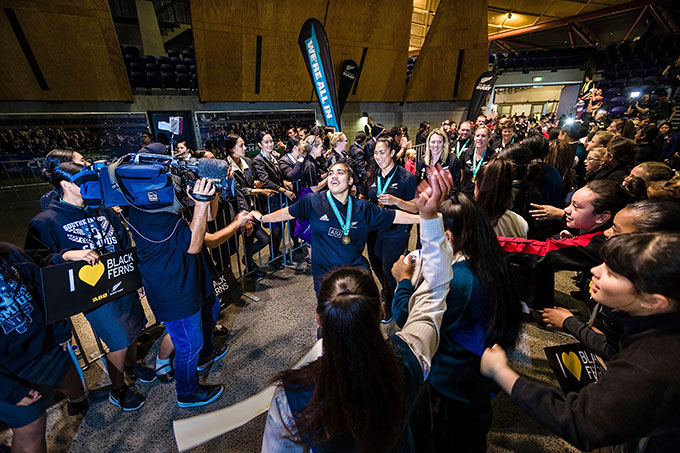
FILM
Happy End
From its first frame, a mordant tour-de-force. Michael Haneke’s study of a wealthy French family collapsing under the weight of its own privilege is a cinematic master bone carving, spare, dry and elegant. The ensemble cast is magnificent, especially the oldest (Jean-Louis Trintignant, the suicidal grandfather) and youngest (Fantine Harduin, the homicidal tween).
Columbus
The South Korean-born video essayist Kogonada’s first feature film is a wonder: a vital, understated yet arresting coming-of-age story which allows intellectual enthusiasm the weight this genre more usually gives to romance. Haley Lu Richardson and John Cho shine as new friends helping each other through difficult changes, and the cinematography has a rare combination of beauty and alert intelligence.
Get Out
The mid-budget mainstream hit has nearly died in the age of the superhero blockbuster. But there’s one genre which keeps on bucking that trend, and it’s horror. The very best of this year’s break-out scare-feasts came from American comedian-turned-writer/director Jordan Peele. Get Out is funny, frightening, whip-smart, and it cuts to the core of America’s hypocrisies around race.
Pom Poko
The trend of big screen revivals of classic films reached a new high this year with the Studio Ghibli festival. Princess Mononoke, Howl’s Moving Castle and Spirited Away were even better at full scale than memory suggested, but the stand-out was Isao Takahata’s never-previously-seen-here Pom Poko. If you’ve wondered whether a film about talking racoons could also be an epic tragicomic masterpiece, the answer is, hell yes.
Logan Lucky
Steven Soderbergh’s return to the caper comedy-drama territory of his Ocean’s 11 films passed unnoticed by many, thanks to an experimental distribution model involving minimal advance advertising. No one will be trying that again for a while, but the film will have a long afterlife. Channing Tatum, Adam Driver and Riley Keough are great as the red-neck siblings with a heist plan, and Daniel Craig delivers one of the year’s best supporting turns as their safe-cracking expert. Bonus prize for the year’s best use of a John Denver song. (Bizarrely, there were many contenders).
PEOPLE
Aucklander of the Year
Prime Minister Jacinda Ardern
January 1, 2017: Bill English is Prime Minister. Andrew Little is Leader of the Opposition. The general consensus is that one of them is more boring than the other, but no one has much appetite for arguing which. Presumably the election will sort it out. Labour is polling at somewhere in the 20s, but everyone agrees that with John “they just keep voting for him” Key out of the picture, that’s due to change.
Jacinda Kate Laurell Ardern is a Labour list MP. She was elected to parliament in 2008, the same day the lights went out on Helen Clark’s government and Clark herself stepped down as Labour leader. Clark was MP for Mt Albert for 27 years. Ardern begins 2017 by running to represent Labour in the Mt Albert by-election triggered by the departure of Clark’s successor in the seat, David Shearer. Ardern tweets: “I’m excited by the idea of a by-election and the chance to talk about Labour’s vision and ideas — if Mt Albert will have me!” Spoiler: it will have her.
January 12: Labour selects Ardern, unopposed, for the by-election. There is no National candidate, since on the whole National would rather not go into a general election year having just been thrashed to no purpose in one of the enemy’s strongholds. (It also seems to be the case, based on the reliable “snarky gratuitous put-downs from Cabinet ministers” index, that Ardern’s Key-like appeal to her base makes National insiders nervous; the hope is perhaps to make her inevitable victory look as hollow as possible.) The Greens politely stand against her, and on February 25 she wins by an unsurprising landslide.
March 1: Labour deputy leader Annette King announces she is retiring from politics. One week later, Ardern is elected to replace her. A week, as everyone knows, is a long time in politics. It is now 29 weeks until the election. Labour is still polling in the 20s. By mid-winter that number has drifted down slightly, and people across the political spectrum are starting to think — glumly, numbly, complacently — that they know what the election campaign will look like.
Twice this century, while a major political party has been lying on the slab with commentators standing round debating whether it was dead, comatose, or just asleep, lightning has struck from a clear sky. Don Brash’s race-baiting 2004 Orewa speech proved, yet again, that you can go a long way in New Zealand politics if you just blame Maori. This year’s lightning strike was a more positive thing, relentlessly positive even: Andrew Little stepped down, Jacinda Ardern stepped up, and the term “Jacindamania” started appearing in headlines on the other side of the world.
In the wake of the election, with Labour’s post-specials vote percentage fixed at 36.9, up from 25.1 in 2014 and 27.5 in 2011, you could hear some National partisans proclaiming that there had never really been a Jacinda effect. Since some of the fluctuating and contradictory pre-election polls had predicted Labour would replace National as the largest parliamentary party, this relief-fuelled attempt at rewriting the record is understandable. But think back to July… and to March… and to January.
The youngest Labour leader in history and only the second woman to fill the job, Ardern singlehandedly woke her party up and brought it back. She was greeted with patronising commentary and sexist questions but kept her dignity while making the questioners look exactly as petty as they were. She promised that she and her team would run “the campaign of our lives”, and she delivered: she made the idea of a centre-left government plausible again.
October 19: Winston Peters anoints Jacinda Ardern as Prime Minister. When Metro sat down to pick our Aucklander of the Year, there was only one thing to say: Let’s do this.
Ponsonby Road Bistro " href="/food/food-restaurants/ponsonby-road-bistro" target="_blank" rel="noopener noreferrer" data-id="7819" data-mce-href="/food/food-restaurants/ponsonby-road-bistro" data-mce-selected="1">?Ponsonby Road Bistro
One of the most consistently good restaurants in the entire city, this place does Ponsonby proud. Sarah Conway’s menu, which changes every three weeks, is a pleasure for those who prefer the familiar as well as those who lust after “wow” moments.
Sidart " href="/food/food-restaurants/metro-top-50-restaurants-2017-sidart" target="_blank" rel="noopener noreferrer" data-id="73887" data-mce-href="/food/food-restaurants/metro-top-50-restaurants-2017-sidart">Sidart
Here you’ll be treated to innovative and ambitious food, expertly choreographed service and twinkling views of the city. You won’t be given a menu, rather a quick run-through of the courses and more in-depth explanations as each dish arrives. Sid Sahrawat is a master of reinventing familiar flavours, boldly playing with sweet and savoury elements in a dish (parmesan ice cream with honeycomb, anyone?) and surprising textures.
The Engine Room " href="/food/food-restaurants/metro-top-50-restaurants-2017-the-engine-room" target="_blank" rel="noopener noreferrer" data-id="73923" data-mce-href="/food/food-restaurants/metro-top-50-restaurants-2017-the-engine-room">The Engine Room
Consistent, welcoming and serving good food with flair: The Engine Room epitomises what a neighbourhood restaurant ought to be. There’s seafood and steak, and menu staples such as light-as-air twice-baked goats’ cheese soufflé and churros with thick liquid dark chocolate. This is a smart yet comforting restaurant, not only for classics done well, but for polish and reliability.
The French Café
Executive chef Simon Wright’s menus are carefully curated processions of pretty-on-the-plate flavour bombs such as smoked duck exquisitely balanced by juniper and blackcurrant. The waitstaff are meticulous in their attention to detail, meeting diners’ needs before they even know they have them. “May I get you another?” they murmur; the answer, invariably, is, “Yes”.
The Grove " href="/food/food-restaurants/metro-top-50-restaurants-2017-the-grove" data-id="73933" data-mce-href="/food/food-restaurants/metro-top-50-restaurants-2017-the-grove">The Grove
You could be forgiven for assuming that because this gem of a restaurant has been around far longer than some of the new stars in Auckland dining, it’ll feel predictable. Thrillingly, you couldn’t be further from the truth. An evening at Auckland’s best fine-dining restaurant is a journey of exceptional culinary creativity and skill.
All these restaurants were awarded five spoons in the Metro Peugeot Restaurant of the Year Awards 2017.
Metro’s specialist writers celebrate the best of our city.
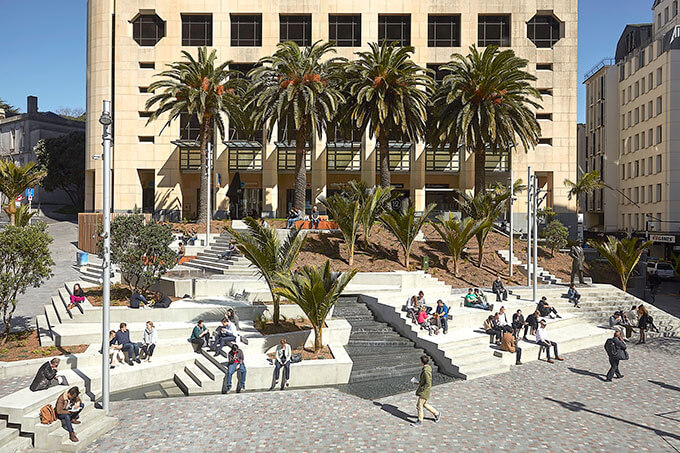
ART
A light-filled jewel
After the debates about its location, its shape, whether it was or wasn’t an artist taking the piss out of Auckland, whether the council should or shouldn’t chip in for it, we finally got it. And Michael Parekowhai’s The Lighthouse is magnificent: a light-filled jewel on Queens Wharf, which acts as home and prison to a stainless-steel Captain Cook — New Zealand’s first tourist — right beside the cruise ships.
A year of departures
Three curators left Auckland this year, and leave big boots to fill. Misal Adnan Yildiz singlehandedly took Artspace off life support. Zara Stanhope oversaw a period of new energy and intelligence in the Auckland Art Gallery’s programme. And Bruce Phillips did so much to put Te Tuhi on the contemporary art map. All tremendous losses.
The year of Fafswag
This was the breakout year for the LGBTQI+ collective of Pacific artists. In March, Artspace hosted one of their vogue balls — a searingly exciting three hours of dance, vogueing battles, and queer politics. There was a residency at Basement Theatre, a public art project, and a Vice documentary. They’ve got an app coming out soon, and in October they featured in the world’s most important art magazine, Artforum International. Unstoppable.
Finally — a good Chartwell Collection show
The Chartwell Collection is so essential to the Auckland Art Gallery’s programme. But the annual collection show often poses tricky problems for curators. This year, Natasha Conland nailed it with Shout Whisper Wail! The standout work: Jacqueline Fraser’s The Making of Mississippi Grind. When she’s on, Fraser is a genius.
Black Lives Matter
Auckland has a few months of big homecomings ahead, but in October at Hopkinson Mossman, we had the return of Luke Willis Thompson’s work autoportrait from London. Thompson’s 35mm film of Diamond Reynolds was one of the most emotionally draining projects the Walters Prize winner has worked on, made between the time Reynolds broadcast the death of her partner Philando Castile on Facebook Live and the acquittal of the police officer who shot him. A singularly beautiful work.
Classical music
Blisteringly good concert: Pushing Boundaries, APO
How often do we need to hear The Rite of Spring? Play it with this much blistering commitment, and the answer will keep on being “there is no upper limit”. The Auckland Philharmonia Orchestra rounded out the best classical concert of 2017 with a sweetly anguished rendition of the massive Adagio from Mahler’s unfinished 10th symphony, and a persuasive argument for Haydn’s second cello concerto as one of the great transgressive works of its day.
Perfect solo performance: Alina Ibragimova in Ibragimova Returns, APO
Last time the great Russian violinist Alina Ibragimova was here, she performed a Shostakovich violin concerto and then, as an encore, a movement of solo Bach: a perfect pairing. On her return trip this year she played a Bartók concerto, paired with the finale from the Bartók sonata for solo violin. Again, perfectly judged — and perfect playing.
Stand-out opera: Katya Kabanova, NZ Opera
This was a rare chance to hear a full evening of Janácek. Effective staging (the relocation from 19th century Russia to 1950s America was well judged), strong ensemble work, with a first-rate performance from Dina Kuznetsova in the demanding title role.
Inspired programming: The music of Gillian Whitehead, Auckland Chamber Orchestra
A retrospective survey of a living New Zealand composer: how often do we see concerts like this? Try “never”; but under Peter Scholes, the Auckland Chamber Orchestra has had the most adventurous programming strategy of any classical ensemble in the country, and with this, they broke new ground, again. More like this, please.
Best revival: Passio, Voices Chamber Choir & ACO
In 2006, six New Zealand composers extended and enhanced the Renaissance composer Richard Davy’s St Matthew Passion. This year, their work was performed as part of the Auckland Arts Festival, with a staging which let audience members wander among groups of musicians and singers. New music so often vanishes after one performance: this was an excellent use of the festival’s budget.
This is published in the November- December 2017 issue of Metro.
Theatre
Fringe benefits
It’s fitting that as we celebrated the final Auckland Arts Festival programme from Carla van Zon, a reinvigorated Auckland Fringe was nipping at its heels. From Malia Johnston’s Rushes to Julia Croft’s Power Ballad, in 2017, the Fringe was where it was at.
Mia and Morgana
While you could spend most of Silo’s A Streetcar Named Desire trying to work out if it made any sense to set the 1947 classic in Trumpland, Mia Blake and Morgana O’Reilly’s enthralling sister act as Blanche and Stella captured the brutal power of the play — the kindness of strangers, and the cruelty of your intimates.
Imagination by design
No one talks about Auckland’s venue problem anymore. The Maidment is sadly gone, but theatres popped up everywhere this year, from Pleasuredome in Avondale (whose replica New York street took us back to the 80s), to the Pop-up Globe in Ellerslie (whose troupe took us right back to the Jacobean era). The big triumph was the first year of the ASB Waterfront Theatre, Auckland Theatre Company’s new home. The space fired the imagination of the designers, from Amadeus’s mountain of discarded musical manuscripts, to When Sun & Moon Collide’s small-town tea room at the mercy of the lunar cycle.
Brilliance of Boys
The most important work on that stage? Not the main bills, but Boys, the centrepiece of Here & Now, ATC’s rebranded youth festival. Deconstructing Foreskin’s Lament (which put the boot into rugby’s toxic masculinity in the 80s), the cast decisively tackled this country’s contemporary rape culture. Playing over just one weekend, it deserved to run for weeks.
Best of all
Other (Chinese), Alice Canton’s documentary-theatre at The Basement, worked with an ensemble of Chinese-New Zealanders to push against stereotypes and homogeneity to tell nuanced and contradictory stories about this thing we call identity. Resisting the politics of cultural authenticity and putting people, not performers, centre-stage, this was our show of the year.
MUSIC
Favourite festival: Laneway
Ah, the gloriousness of grass under your feet and great music in the air. Moving from a stark carpark behind the fish market to its new home in Albert Park was a stroke of genius for uber-indie festival Laneway. K’ Rd’s early-spring band fest The Others Way was great — but not even close to a stinking-hot day and kicking back under the dappled shade of an oak listening to Car Seat Headrest, Fazerdaze and The Chills.
Maddest moment: Bob Log III at Whammy Bar
Intimate smaller venues such as the mighty Kings Arms churn out weekly surprises when it comes to artists getting up close and personal, but nothing beat Arizona’s spangly-suited, fighter-pilot-helmeted Delta bluesman Bob Log III crowd-surfing in a giant inflatable dinghy while belting out mad slide-guitar licks.
Biggest surprise: Midnight Oil
Midnight Oil’s Peter Garrett seemed to enjoy letting off some pent-up energy from his years as a politician when the reunited Oils rocked their way through the hits at Spark Arena, dissing Trump and pushing their ever-relevant eco-message as they went. “Counting The Beat” in honour of Kiwi bassist Bones Hillman was a nice touch, too.
Finest location: Cable Bay
When Fly My Pretties did a summer gig at Waiheke’s Cable Bay Vineyards, the likes of Barnaby Weir, Tiki Taane, Laughton Kora, Ria Hall and Miloux provided a packed stage for an evening of pop grooves, swigging posh vino straight from the bottle and barefoot dancing among the vines. The setting sun provided an incredible backdrop.
Most gob-smackingly magnificent gig: Nick Cave & the Bad Seeds
In a year featuring stunning performances from Bruce Springsteen, Queens of the Stone Age, Sigur Rós and PJ Harvey, Nick Cave stood head and shoulders clear. He commanded a cavernous arena as if it was a cabaret club, mixed classic rockers with intimate new tunes, and owned the stage with his sexy swagger.
FOOD
Cassia " href="/food/food-restaurants/metro-top-50-restaurants-2017-cassia" target="_blank" rel="noopener noreferrer" data-id="73228" data-mce-href="/food/food-restaurants/metro-top-50-restaurants-2017-cassia">Cassia
Heritage and heart combine at Sid Sahrawat’s modern Indian restaurant, where the robust flavours of his childhood meet fine-dining finesse. The result? A sensory overload and food you won’t forget. Pair that with the gentle theatre of the waiters’ rehearsed but never perfunctory service, and what you’re left with is Auckland’s finest restaurant.
Cazador " href="/food/food-restaurants/metro-top-50-restaurants-2017-cazador" target="_blank" rel="noopener noreferrer" data-id="73230" data-mce-href="/food/food-restaurants/metro-top-50-restaurants-2017-cazador">Cazador
Passed down through the Lolaiy family, and now in its 30th year of business, nose-to-tail restaurant Cazador consistently surprises; head chef and co-owner Dariush Lolaiy’s mastery of meat is a triumph. Cazador’s motto is “try something different”, referencing the less-conventional cuts of meat and game on offer — roast hare saddle, pheasant parfait or wild boar, anyone?
Cocoro " href="/food/food-restaurants/metro-top-50-restaurants-2017-cocoro" target="_blank" rel="noopener noreferrer" data-id="73236" data-mce-href="/food/food-restaurants/metro-top-50-restaurants-2017-cocoro">Cocoro
At this Japanese restaurant, head chef and co-owner Makoto Tokuyama turns out food that is both breathtakingly beautiful and superior in quality. You won’t find any shortcuts here: house-pickled ginger and freshly grated wasabi are just two extras that make Cocoro shine.
Coco’s Cantina
It’s the kind of restaurant you’d be so pleased with yourself for discovering abroad. Renee and Damaris Coulter serve unfussy, home-cooked Italian food made using locally sourced, ethical produce — it’s as simple as that.
Depot " href="/food/food-restaurants/metro-top-50-restaurants-2017-depot" target="_blank" rel="noopener noreferrer" data-id="73775" data-mce-href="/food/food-restaurants/metro-top-50-restaurants-2017-depot">Depot
The food here, which revolutionised the Auckland dining scene when Depot opened in 2011, is unforgettable. To think of Depot is to taste the zingy pickled lemon mayo in the hapuku sliders, the gooey woodroasted bone marrow, the sweet, sweet sugar pie. It’s a celebration of provenance with nostalgic heart. Our love for Depot endures.
Euro
Euro does exactly what a waterfront bistro catering to mostly corporate clients should do: serve flawless steak and seafood in softly furnished and carpeted surrounds. Gareth Stewart innovates while retaining the timeless Euro style with surprising deconstructions, like the beef tartare with its dehydrated kumara in place of toast points. They’re keeping with the times with a thoughtful separate vegetarian à la carte menu, too.
Merediths
Get in before Merediths closes at the end of the year for Michael Meredith’s dégustation-only experience, which feels far ahead of its time. This is an undoubtedly progressive chef, one of the leading voices in the conversation about what our cuisine is and what it could be, so expect local, still somewhat unfashionable ingredients (though surely not for long) such as muttonbird and eel presented in surprising ways.
Orphans Kitchen " href="/food/food-restaurants/metro-top-50-restaurants-2017-orphans-kitchen" target="_blank" rel="noopener noreferrer" data-id="73850" data-mce-href="/food/food-restaurants/metro-top-50-restaurants-2017-orphans-kitchen">Orphans Kitchen
Here, two bright minds — chef Tom Hishon and manager Josh Helm — are pursuing a holistic approach to urban dining, where bees are kept on the roof, community gardens are tended and oft-irrationally discarded cuts of meat, parts of plants and wine-bin ends are treasured. The chance to rediscover old-school ingredients such as tongue or quince in new ways makes Orphans a unique dining experience.
